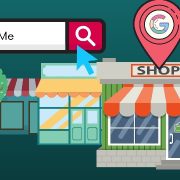3 Steps to Take Before You Start Your Local SEO Strategy
Years ago, all a local business had to do was build a lot of links and their business would show up on the first results page. SERPs have gotten much more competitive in that time, and Google has introduced a strict local algorithm, so now local SEO has become a unique sector that is often more difficult to implement than almost any other online marketing strategy.
You can always hire a company to take care of all of your SEO needs, but if you have a tight budget and are willing to get your hands dirty, there are steps you can take to try to get onto the coveted first page of local results, called the 7 Pack. You’ll recognize the 7 Pack as the listing of businesses directly under the map of the area. Search Engine Journal set out a five step plan to improve your local business rankings.
The first step is checking to see if your target keywords actually trigger the local algorithm. Usually simply including key phrase combinations such as the city and most important keyword should connect with the local search results, but sometimes this doesn’t work. If that is the case, then it would seem your SEO strategy should be less localized as Google doesn’t register your service as part of its local algorithm.
One of this biggest tricks for local businesses is knowing where to establish your company online. Google’s algorithm always gives preference to businesses located within the city limits searched for, often called the “centroid” bias. This means Google will rank businesses located closer to the heart of the city higher than those on the outskirts if all other factors are equal.
For businesses located in suburbs or just outside of city limits this is poses a big question. Most want to capitalize on the bigger market from the closest city than the small market in their local town, but trying to rank in a metropolitan area when you aren’t physically established within that boundary is a incredibly difficult task. You have to decide if you want to fight to get into the rankings for the city, and possibly only achieving the second or third page on the local listings, or you can aim to corner the market in your town and rank first every time for a smaller audience.
Deciding that move usually requires determining how competitive your niche is, and even businesses already well situated in a metropolitan market will be rewarded for investigating. The quickest way to find out how competitive your market is starts ith taking the #1 ranking in the 7 Pack and copying all of their information exactly as it is displayed in the search bar with quotation marks. This gives you an approximate estimate as to how many directories and citations you will need to outrank the top listing in the 7 Pack. You can do the same for the lowest ranking. Your results obviously have to outdo the lowest ranked business in the 7 Pack to overtake it, so exploring will give you an idea just how tall the SEO mountain you have to climb is.
Once you’ve done your research you can actually begin working on your local SEO, but the process will be much easier thanks to informed decisions only possible through understanding your local online market. Search Engine Journals last two steps can get you going on improving your local site’s ranking but nothing happens overnight. Local SEO is competitive and time consuming, but without it you are falling behind the times.





Leave a Reply
Want to join the discussion?Feel free to contribute!